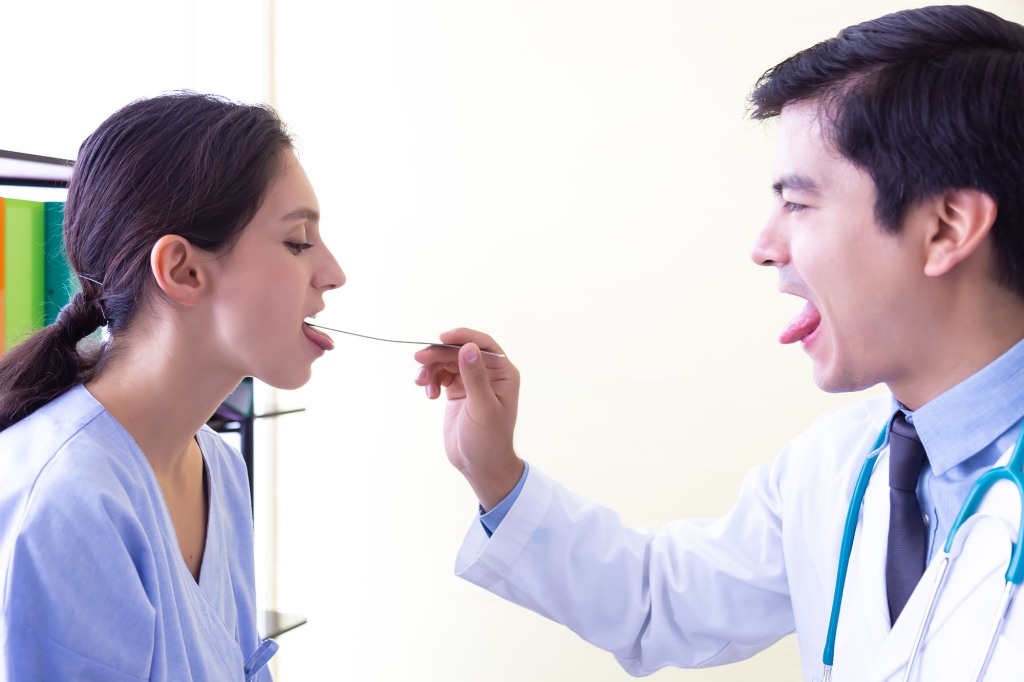What you need to know
Pathologists have raised concern about the link between oral sex and oropharyngeal cancers as the rate of cases continues to rise in middle-aged people.
Thanks to the revised improvements to sexual education across the nation, we’re more attuned than ever to the dangers of Human Papillomavirus – otherwise known as HPV – and its nature to be easily transmitted via sexual activity.
However, the latest data to surface exposes a relatively unknown threat of the common virus, indicating that HPV has a strong link to common oropharyngeal cancers that affect the tonsils and throat.
With a general lack of awareness surrounding oropharyngeal cancers, oral health experts are concerned that cases are going to continue to rise.

Oropharyngeal Squamous Cell Carcinoma (OP-SCC) is a common oral cancer affecting the oropharynx (an area of the throat) and the tonsils. OP-SCC is most commonly brought about by two causes: excessive tobacco and alcohol use, or oral infection of HPV.
HPV is estimated to affect up to 13 million Americans each year, and in many cases, it can lead to subsequent carcinomas such as cervical cancer. So, if you think about it, oral cancer as a result of HPV transmission makes more sense than we may have thought.
Researchers have shared their findings, stating that HPV affecting this area is usually spread through oral sex practices but can also be attained through kissing and sharing food. Among all variations of HPV, type 16 has been labeled as the highest risk, contributing to an average of 90 percent of OP-SCC cancer cases, affecting both men and women.
Pathologists and oral health experts say middle-aged men and women are most at risk of obtaining OP-SCC, though cancer can affect any age group. Professor Ruta Gupta, Head and Neck Oncology pathologist, and Ambassador for Pathology Awareness Australia says that cancer can affect anyone.
“Most patients that get oropharyngeal cancer caused by HPV are relatively young, otherwise completely healthy people. They aren’t generally smokers or drinkers.”
What are the signs of OP-SCC?
The primary indicator of OP-SCC is the onset of a sore throat that fails to subside over time. As cancer progresses, it is common for lumps in the throat to develop as well as the onset of ulcers and abscesses which are usually best indicated during a healthcare examination.
According to Dr. Amanda Phoon Nguyen, Oral Medicine Specialist, “The rule of thumb is that if you yourself notice anything that doesn’t go away in two weeks, it should be checked out. Things like difficulty swallowing, pain, an ulcer that doesn’t heal, lymph nodes that come up, swellings or bumps. Anything unusual that doesn’t go away within two weeks should be checked out.”
Is there a test for OP-SCC?
Unlike other HPV-associated cancers, there is no current screening for oropharyngeal cancers. And while there is a common HPV test for females, there remains no universal HPV test for males.
As such, the detection of OP-SCC is completely reliant on community awareness and regular check-ups with health care professionals. Should lumps be detected, these can be biopsied and checked for any evidence of cancerous cells.
Professor Jonathon Clark of the Head and Neck Cancer Reconstructive Surgery at The University of Sydney says; “The most common location for this type of cancer is the tongue base, which can’t be seen through the mouth. This needs a head and neck surgeon to look with an endoscope through the nose to assess any lumps or lesions.
What is the severity of HPV-associated OP-SCC?
The National Cancer Institute states that HPV infections account for an average of five percent of all cancers recorded worldwide. That being said, HPV can pass naturally in humans as a result of strong immune defenses, meaning that some people will not develop cancer if they receive HPV.
Additionally, HPV-associated cancer has a marginally greater prognosis than non-HPV-associated cancers.
What is the best defense against OP-SCC?
Aside from increased national awareness of oropharyngeal cancers associated with HPV, the best way to prevent contracting the virus is through vaccination.
“We expect to see a reduction in these cancers once widespread vaccination has been in place for 20 years. People need to be aware of cancers affecting the head and neck, and to know that non-smokers and younger people can [also] be affected,” Professor Clark reports.
The HPV vaccine was only introduced in 2006 meaning that a majority of age groups were missed in the rollout.
In terms of daily practices, Dr. Phoon Nguyen says basic safety measures are the best way to lessen your risk of contracting OP-SCC.
“Practice safe sex and be aware of your oral health. Get checked if you spot anything or feel anything that’s unusual and be aware that there’s a risk associated with oral sex and HPV.”
Currently, there are over 100 types of HPV present in demographics around the world. And while the vaccine is proven to protect against the majority of these varieties, the specific formula and time in history in which a person received the vaccine ultimately determines the expanse of their defense against HPV.
Today, Australia stands as one of 42 countries with an effective gender-neutral HPV vaccination program. However, researchers suggest we won’t start to see an obvious decline in HPV-related cancers until 2060.
Read the full article Here


